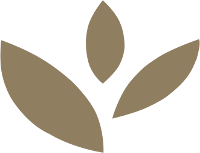Madagascar cloves
In the 1820s, when Pierre Poivre, seafarer, botanist and administrator of La Réunion, brought clove tree seedlings to his tree nursery on Sainte Marie Island, Malagasy farmers soon began clove farming and production of clove spices to meet the demand for this newfound export crop.Within the next century, clove trees were introduced along the east coast of Madagascar and between 1920 and 1930, the country had become a major producer of clove products. By the 1990s, Madagascar was the world's leading exporter of cloves, including clove essential oils.
Today, clove production spans much of the country's east coast, from Sambava to Fort-Dauphin, providing an important income to farmers during seasons of shortfalls in staple crops, such as rice and vegetables.
The main cultivation and production area is Analanjirofo, which in Malagasy means clove forest. The area makes up large parts of the Toamasina province, including Tamatave, Sainte-Marie Island, Mananara, Fenoarivo Atsinanana (Fénérive) and Soanierana Ivongo.
The clove tree, scientifically named Syzygium aramaticum, is part of the Myrtaceae family of evergreen trees. The word clove originates from the Latin word "clavus" which means nail since the shape of the clove spice resembles a nail-like spike.
A clove tree usually reaches between 10 and 12 metres but can grow as tall as 20 metres. The tree grows best in ferralitic tropical soil and can produce fruit for 30 years, with its first flowers appearing between its fifth and tenth year. Cloves are the unopened flower buds, collected while still green and pink. The tree has strong green leaves and large beautiful red flowers.
Harvesting varies depending on the area but generally take place between October and March.
During harvesting, the unopened buds are manually removed in clusters from branches. The buds are thereafter hand-picked and sun-dried. During the drying, the buds are consistently shaken to avoid fermentation, until turning brown.
Madagascar cloves are graded into three classifications depending on harvest, processing and intended use:
- CG1 - "Handpick", brown-reddish clove buds with less than 10% moisture, with minimum headless cloves and free from admixture and baby cloves.
- CG2 - "Prima", brown-reddish with less than 11% moisture and 0.5% admixture and few headless and baby cloves.
- CG3 - "Courant" (ordinary), brown-reddish, with less than 10% moisture and less than 3% admixture and baby cloves.
The right moisture level and drying process help minimise weight loss and retain aroma for longer while the spice is stored in shops and kitchen cupboards. When packed and stored well, the intensity of the aroma of the spice will hold for longer, at least two years, although it can likely be used as a spice for much longer. A simple freshness check is to press a fingernail into the stalk of the clove and if it secretes a small amount of oil, or when cloves are placed in a glass of water they will float vertically or sink, they are of good quality. Low-quality cloves will float horizontally.
The clove's main bioactive ingredient, eugenol, gives clove its eucalyptus-like taste and several health effects: anti-bacterial, fungicide, antiseptic, antioxidant, anaesthetic, analgesic and anti-inflammatory. Unsurprisingly, clove is used in a wide range of traditional medicines.
Cloves are used to spice cuisines worldwide from curries to sauerkraut and are used in drinks such as red wines and clove herbal teas. The spice pairs well with vanilla and pepper.
